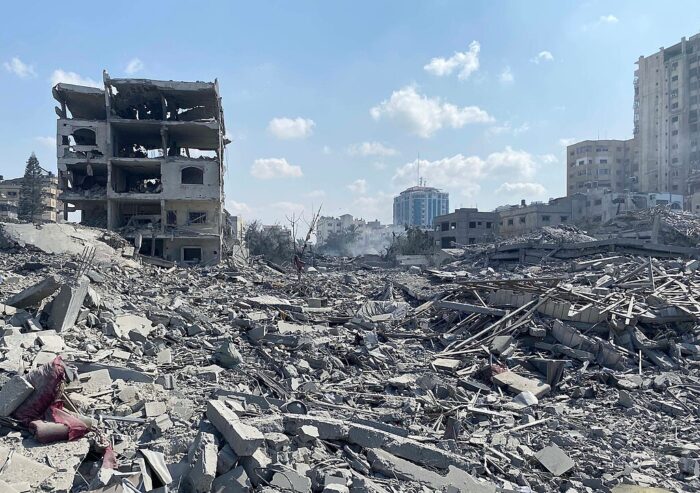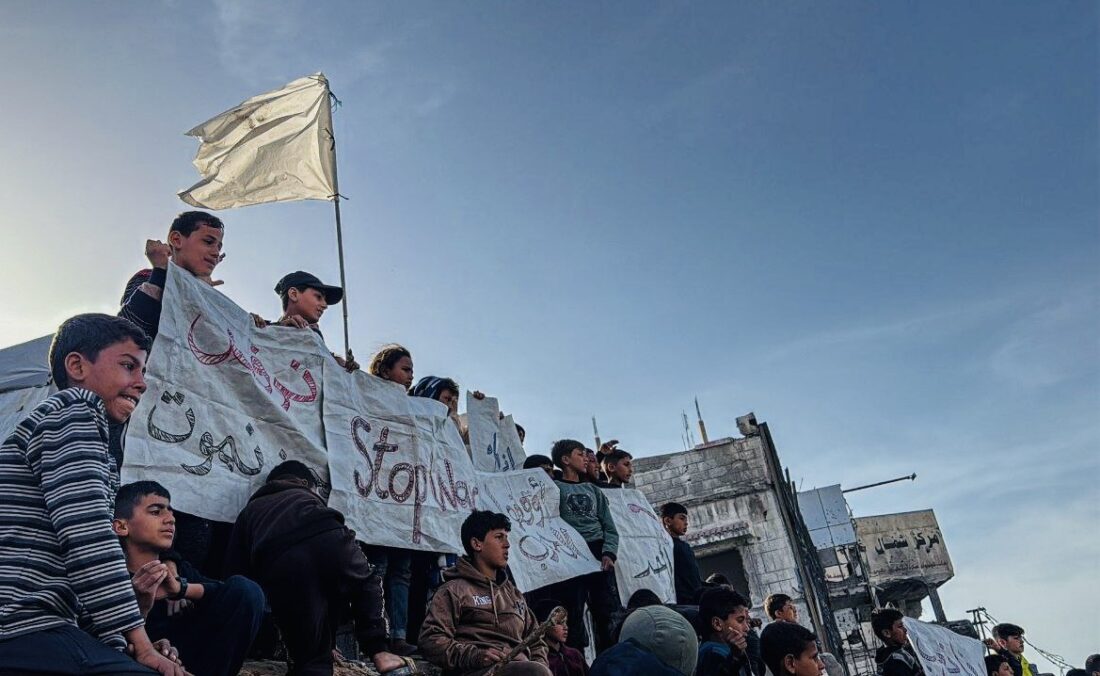Rumblings of discontent rolled through the Gaza Strip this week, raising speculation that Hamas’ popularity, such as it is, could well be on the wane.
In the past few days, hundreds of Palestinians have taken to the streets of Gaza City, Beit Lahiya, Nuseirat and Deir al-Balah to vent their frustration and anger over a wide range of related issues that have adversely affected them.
Whether these protests were spontaneous or pre-planned is unknown, but the themes that underpinned them were unmistakable.

Amid continuing Israeli airstrikes targeting Hamas officials and command posts, protesters chanted slogans concerning the dire humanitarian situation in Gaza, the breakdown of the ceasefire, and the continuation of the Israel-Hamas war.
From this perspective, the protesters were probably animated by a certain degree of anti-Israel animus.
Yet, in a rare show of dissent, they carried signs critical of Hamas, which has governed Gaza with an iron fist since 2006.
Taking note of these developments, Israeli Prime Minister Benjamin Netanyahu said, “In recent days, we have witnessed a new shift. We saw large, open protests in Gaza against Hamas rule.”
Shortly after he made this comment, The New York Times reported that the leaders of prominent Palestinian families and clans in southern Gaza had issued a telling statement. They urged Palestinians to launch “a popular uprising against injustice,” called on Hamas to “lift its hand from Gaza immediately,” and denounced “decisions that do not represent us.”
And in a stinging rebuke obviously referring to Hamas, they added, “Gaza is not held hostage by anyone … and will be liberated by the will of its people.”
It is clear that an undetermined number of Gazans are deeply unhappy with the status quo and hold Hamas responsible for the disasters that have befallen Palestinians in Gaza.
Hamas, the voice of Palestinian rejectionism and a proxy of Iran, plunged Gaza into a whirlpool of bloodshed, chaos and ruin after attacking Israel on October 7, 2023. Responding fiercely to Hamas’ invasion, Israel launched an air and land campaign that has devastated Gaza.
Fifty thousand Palestinians, including about 20,000 Hamas and Islamic Jihad combatants, have been killed since then. Ninety percent of Gaza’s inhabitants have been displaced from their homes. And much of Gaza has been reduced to a wasteland of shattered buildings and a sea of rubble.

Hamas started this war with the clear intention of destroying the internationally recognized state of Israel. Having invaded a string of kibbutzim, towns and army bases in the western Negev, Hamas hoped to push northward to such major cities as Ashkelon, Ashdod and even Tel Aviv.
Israeli forces stopped Hamas’ army of 3,000 terrorists, but not before they had massacred roughly 1,200 civilians and soldiers and abducted 251 Israeli and foreign nationals.
Shocked and stunned by the sudden and horrific loss of an unprecedented number of its citizens, the Israeli government decreed that the war would not end until Hamas’ military and governing capabilities were eradicated and all the hostages were released.
Driven by these objectives, Israel pummelled Gaza as never before. That so many Palestinians were tragically killed during Israel’s offensive is mainly due to the fact that Hamas deliberately embedded itself in civilian infrastructure, cynically using civilians as human shields.
More and more Gazans have gradually begun to understand that the high Palestinian death toll and the wholesale destruction of residential buildings is largely Hamas’ fault.

Hamas could have transformed Gaza into a haven of peace and prosperity had it chosen to do so after Israel’s unilateral withdrawal in 2005. Hamas squandered that golden opportunity.
A year later, having defeated the mainstream Fatah faction in an election, Hamas was presented with another chance to improve the lives of Gaza’s residents.
Instead, Hamas cracked down on dissent, creating an oppressive Islamic totalitarian entity, and converted Gaza into an armed camp. Aided and abetted by Iran, Hamas devoted much of its scarce resources to fighting Israel in a succession of futile and costly border wars and skirmishes.
Inevitably, some ordinary Palestinians grew weary of the violence, mayhem and instability. Last year, Palestinian protesters staged demonstrations in Deir al-Balah and Khan Younis demanding an end to the current war, the cessation of Hamas rule in Gaza, and the release of Israeli hostages.
Following the eruption of the latest protests in Gaza, Israeli Defence Minister Israel Katz congratulated the demonstrators, saying the war can only end with Hamas’ defeat and removal.
Interestingly enough, Palestinian Authority President Mahmoud Abbas’ Fatah faction agrees with Katz’s assessment. On March 22, Fatah spokesman Monther al-Hayek urged Hamas to step down, warning that its refusal to do so could jeopardize the existence of the Palestinians in Gaza.
So far, Hamas has not responded violently, but it has warned protesters that they will be treated as Israeli collaborators. One of its officials, Basem Naim, claimed on March 27 that the demonstrations are directed against Israel because Palestinians face “extermination” and Gaza is in danger of “destruction.”
“People are calling to stop the aggression, but the enemy and other parties with political agendas are diverting the spontaneous protests to serve the occupation’s agenda and trying to portray it as if the demonstrators are against the resistance,” he said.
Naim, of course, is spinning a tall tale, refusing to acknowledge that some Gazans are sick and tired of Hamas’ misrule and its obsessive focus on Israel.
Yet other Gazans, while disillusioned with Hamas and yearning for a normal life, hold Israel mainly responsible for Gaza’s descent into purgatory in the past 17 months.
